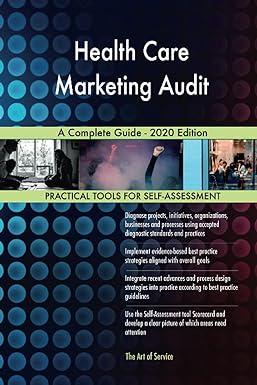Question
4. Which of the following is not a major advantage of a corporate form of organization? Separate legal existence. Continuous life. Government regulations. Transferable ownership
4.Which of the following is not a major advantage of a corporate form of organization?
Separate legal existence.
Continuous life.
Government regulations.
Transferable ownership rights.
5. ABC Corporation issues 1,000 shares of $10 par value common stock at $12 per share. In recording the transaction, credits are made to:
Common Stock $10,000 and Paid-in Capital in Excess of Stated Value $2,000.
Common Stock $12,000.
Common Stock $10,000 and Paid-in Capital in Excess of Par $2,000.
Common Stock $10,000 and Retained Earnings $2,000.
6. XYZ, Inc. sells 100 shares of $5 par value treasury stock at $13 per share. If the cost of acquiring the shares was $10 per share, the entry for the sale should include credits to:
(a) Treasury Stock $1,000 and Paid-in Capital from Treasury Stock $300.
(b) Treasury Stock $500 and Paid-in Capital from Treasury Stock $800.
(c) Treasury Stock $1,000 and Retained Earnings $300.
(d) Treasury Stock $500 and Paid-in Capital in Excess of Par $800.
7. M-Bot Corporation has 10,000 shares of 8%, $100 par value, cumulative preferred stock outstanding at December 31, 2017. No dividends were declared in 2015 or 2016. If M-Bot wants to pay $375,000 of dividends in 2017, common stockholders will receive:
(a) $0.
(b) $295,000.
(c) $215,000.
(d) $135,000.
8. Which of the following statements about small stock dividends is true?
(a) A debit to Retained Earnings for the par value of the shares issued should be made.
(b) A small stock dividend decreases total stockholders' equity.
(c) Market price per share should be assigned to the dividend shares.
(d) A small stock dividend ordinarily will have an effect on par value per share of stock.
9. All but one of the following is reported in a retained earnings statement. The exception is:
(a) cash and stock dividends.
(b) net income and net loss.
(c) sales revenue.
(d) prior period adjustments.
10. When a stockholders' equity statement is presented, it is not necessary to prepare a (an):
(a) retained earnings statement.
(b) balance sheet.
(c) income statement.
(d) None of the above.
11. The ledger of JFK, Inc. shows common stock, common treasury stock, and no preferred stock. For this company, the formula for computing book value per share is:
total paid-in capital and retained earnings divided by the number of shares of common stock issued.
common stock divided by the number of shares of common stock issued.
total stockholders' equity divided by the number of shares of common stock outstanding.
total stockholders' equity divided by the number of shares of common
Step by Step Solution
There are 3 Steps involved in it
Step: 1

Get Instant Access to Expert-Tailored Solutions
See step-by-step solutions with expert insights and AI powered tools for academic success
Step: 2

Step: 3

Ace Your Homework with AI
Get the answers you need in no time with our AI-driven, step-by-step assistance
Get Started


